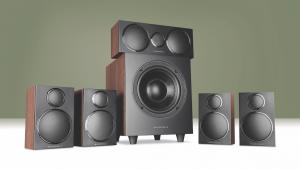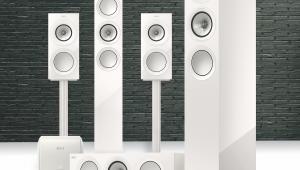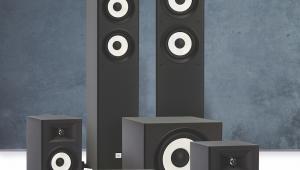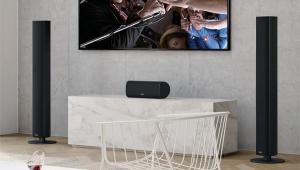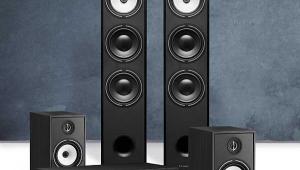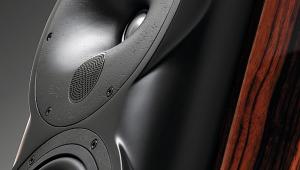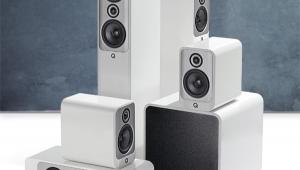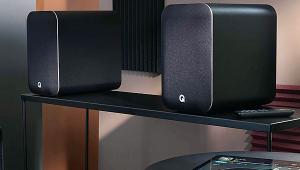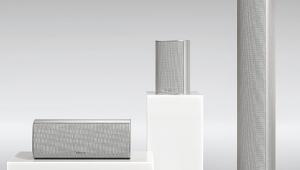Pioneer S Series 5.0.4 review
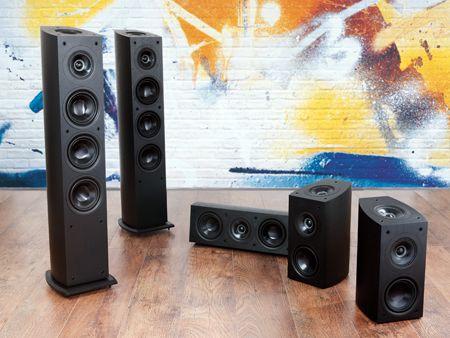
 Putting speakers on or in a ceiling for a Dolby Atmos system isn't an option for everyone, so speaker manufacturers have risen to Dolby's challenge with upfiring models to create that all important height info. So far, these have come in the shape of add-on modules. First to market with an integrated Atmos-capable design is Pioneer with its new S series models.
Putting speakers on or in a ceiling for a Dolby Atmos system isn't an option for everyone, so speaker manufacturers have risen to Dolby's challenge with upfiring models to create that all important height info. So far, these have come in the shape of add-on modules. First to market with an integrated Atmos-capable design is Pioneer with its new S series models.
This range comprises the floorstanding FS73A, standmount BS73A and matching centre, the C73A. Pioneer does not build a subwoofer for the series in the EU (US customers are provided with one but it hasn't made the trip across the Atlantic) so buyers are free to find something to suit from another manufacturer.
The key feature of the FS73A and BS73A speakers is, of course, their upward-firing driver. This is a dual-concentric design, with a 4in aluminium midrange driver enclosing a 1in soft dome tweeter, which promises a decent punch to that reflected audio.
This dual-concentric design is also used as the main tweeter and midrange driver in all five speakers, aiming for a tonal balance across all channels, including the Atmos heights. Having a dedicated midrange driver at this price point is relatively unusual – most concentric driver rivals use the outer driver for midbass, but here you'll find dedicated bass units, too, meaning all the S73 speakers have more drivers than you might expect. The conventional bass driver is a 5.25in aluminium design, and is used either singly (the BS73A), in pairs (C73A) or in a potent trio (FS73A). Subsequently, this extra radiating area means the speakers claim lower frequency responses than you might anticipate (38Hz in the case of the floorstander), although no roll-off figures are quoted.
Relatively compactGiven the number of drivers at work here, Pioneer has done a commendable job of keeping the design of these speakers usefully compact and, unless you remove the grilles, you wouldn't immediately know there is anything significantly different about their form until you clock the second pair of terminals at the back. And I'd be inclined to keep the grilles in place as that upward-firing driver has 'dust trap' written all over it.
Aesthetically, they lack a strong visual identity, and I can't I say that I'm particularly enthused by black ash as a finish. But they're not ugly and won't dominate most rooms – the curved cabinets, which have sonic benefits in terms of resonance and resistance to standing waves, also reduce the visible bulk of the cabinets. That said, the BS73A surround is still a fairly hefty design for a speaker that many will be trying to place out of the way.
The floorstanders are fitted with a plinth to increase stability and this works well. And there's nothing about the build quality to cause concern.
Setting up what is my first home Atmos experience proved pretty painless. My resident Yamaha RX-A3040 was able to make a reasonable stab at distance and delay settings for all speakers, although a simple SPL meter check of levels meant that I raised the levels of the upward-firing drivers over and above what the YPAO system set them to. A Tannoy TS2.12 was added to provide the necessary low- end as a suitably priced subwoofer.
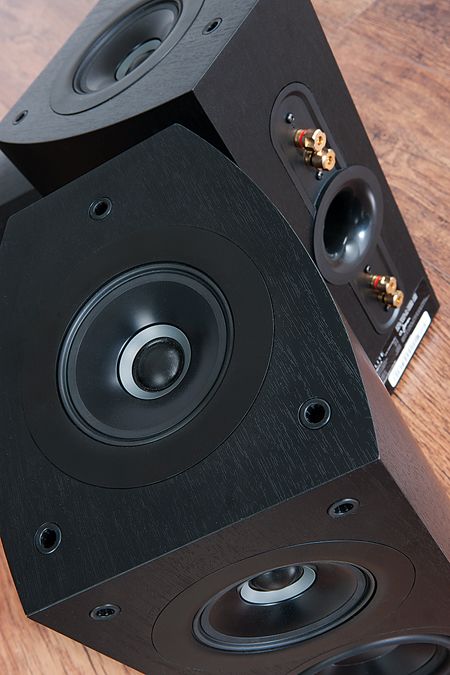
As I've not had any Atmos speakers through for review until now, I've not sought out any of the Atmos-mixed films because, frankly, they all look terrible. As such, I initially used the Pioneers as a conventional quintet (some people may be buying these before upgrading their front-end hardware, if at all) and they proved very accomplished. I gave the S73s my new favourite reference scene - the congested and disjointed streetfight in Fury – and they did a fine job of making sense of the huge amount of war-tastic audio information being beamed at my listening position. They crafted a believable sense of the confined space both inside and outside the tank, with voices well-handled by the C73A amidst the mass of gunfire and explosions. And with all the speakers able to generate meaningful bass in their own right, the outcome was a more convincing soundstage, with low frequencies emanating from all corners of the room.
With the less punchy but rather more brooding Gone Girl, the speakers show that this ability to rationalise information and present it with plenty of fine detail is not merely useful with action fare, and their talents at producing an immersive soundstage with little sense of individual enclosures is amongst the best I've encountered at the price.
Voices in the David Fincher drama are well-textured and easy to follow. And the layered soundtrack oozes plenty of refinement, arguably at the expense of the last ounce of excitement but it makes the Pioneers easy to listen to for long periods.
Biting the bullet and switching to Teenage Mutant Ninja Turtles, the good news - for what is the key selling point of the Pioneers – is that the upwards-firing drivers are effective. In my listening room, with its 8ft-high ceiling, there was a genuine extra dimension to the way that the Pioneers perform. And with smooth integration with the main drivers, they avoid being showy or a gimmick – at least as much as not being a gimmick is possible when the subject matter is a group of anthropomorphic turtles escaping down a snowy mountainside. Moving onto the latest Atmos demo disc and its plethora of skilfully-mixed shorts confirms that Pioneer has managed to voice the S series in such a way as to give little hint your system isn't employing genuine downward-firing presence speakers. The extra immersion offered by these Atmos demos was tangible.
As a final and slightly unexpected ribbon to an already pretty attractive bow, the FS73 is a rather lovely performer in stereo. Bass extension without a subwoofer is perfectly respectable and that cohesion and space in the upper midrange makes them sound rich, refined and detailed. They might be designed with multichannel in mind but Pioneer hasn't forgotten the basics.
Competitive cabinetsAnd those basics do matter. Despite their additional drivers, any surround sound speaker array has to be competitive with 'normal' packages. This setup is more than good enough to stack up against similarly-priced rivals for a standard 5.1 experience, and superior in stereo to many.
When you do give them Atmos material, they prove a very effective means of adding extra info, and they show the promise of the format over and above the limitations of the existing material – you could enjoy more Steven Seagal DTV movies than current Atmos Blu-rays. And even without dedicated software, you can use them happily in Dolby Surround mode, and owners of older 7- or 9-channel AVRs might even want to experiment using those extra speaker terminals with Pro-Logic/Neo:X/Audyssey post-processing.
In short, this S series bundle is well up to the job of your future audio needs, but is perfectly capable of managing your existing ones, too.
Specification
Pioneer S-FS73A
Drive units: 2 x 1in soft dome tweeters; 2 x 4in aluminium midrange drives; 3 x 5.25in aluminium bass drivers
Enclosure: Rear-ported
Frequency response: 38Hz-20kHz
Sensitivity: 86dB
Power handling: 140W
Dimensions: 236(w) x 1,008(h) x 264(d)mm
Weight: 16kg
Pioneer S-BS73A
Drive units: 2 x 1in soft dome tweeters; 2 x 4in aluminium midrange drivers; 1 x 5.25in aluminium bass driver
Enclosure: Rear-ported
Frequency response: 50Hz-20kHz
Sensitivity: 85dB
Power handling: 140W
Dimensions: 188(w) x 398(h) x 246(d)mm
Weight: 7.1kg
Pioneer S-C73
Drive units: 1 x 1in soft dome tweeter; 1 x 4in aluminium midrange driver; 2 x 5.25in aluminium bass drivers
Enclosure: Sealed
Frequency response: 45Hz-20kHz
Sensitivity: 85dB
Power handling: 140W
Dimensions: 495(w) x 188(h) x 246(d) mm
Weight: 8kg
 |
Home Cinema Choice #351 is on sale now, featuring: Samsung S95D flagship OLED TV; Ascendo loudspeakers; Pioneer VSA-LX805 AV receiver; UST projector roundup; 2024’s summer movies; Conan 4K; and more
|




